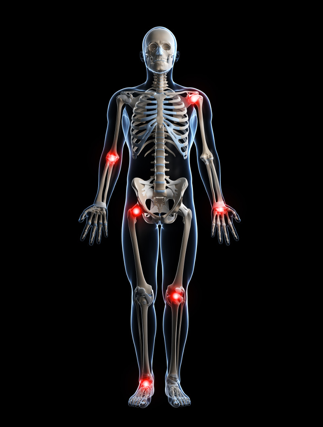
In addition to inflammation, swelling, and pain in the joints, patients with PsA may experience extra-articular manifestations, including enthesitis, dactylitis, uveitis, and inflammatory bowel disease.4 Importantly, PsA occurs in up to 30% of patients with psoriasis, and in 85% of patients, skin disease (ie, psoriasis) occurs before joint disease.5 If left untreated, PsA may result in persistent pain and inflammation, permanent joint damage, and disability.4,6 PsA is associated with a substantial disease burden negatively affecting physical function as well as patients’ ability to socialize due to embarrassment, self-consciousness, and/or depression.4 Although exercise is beneficial, patients with PsA may also be hesitant to exercise due to pain or stiffness.7
The prevalence of PsA is approximately equal in men and women.8 Women with PsA may experience disease differently than men.9 Women with PsA may experience more limitations in daily physical function, more severe fatigue, and worse quality of life than men. For women with PsA who become pregnant, approximately 32% have worsening or ongoing high disease activity during pregnancy, and approximately 40% experience a flare within 1 year postpartum.10
1. U.S. and World Population Clock. United States Census Bureau website. Accessed July 25, 2018.
2. Gladman DD. Psoriatic arthritis. Dermatol Ther. 2009;22(1):40-55.
3. Mease PJ. Measures of psoriatic arthritis: Tender and Swollen Joint Assessment, Psoriasis Area and Severity Index (PASI), Nail Psoriasis Severity Index (NAPSI), Modified Nail Psoriasis Severity Index (mNAPSI), Mander/Newcastle Enthesitis Index (MEI), Leeds Enthesitis Index (LEI), Spondyloarthritis Research Consortium of Canada (SPARCC), Maastricht Ankylosing Spondylitis Enthesis Score (MASES), Leeds Dactylitis Index (LDI), Patient Global for Psoriatic Arthritis, Dermatology Life Quality Index (DLQI), Psoriatic Arthritis Quality of Life (PsAQOL), Functional Assessment of Chronic Illness Therapy-Fatigue (FACIT-F), Psoriatic Arthritis Response Criteria (PsARC), Psoriatic Arthritis Joint Activity Index (PsAJAI), Disease Activity in Psoriatic Arthritis (DAPSA), and Composite Psoriatic Disease Activity Index (CPDAI). Arthritis Care Res (Hoboken). 2011;63 Suppl 11:S64-85.
4. Lee S, Mendelsohn A, Sarnes E. The burden of psoriatic arthritis: a literature review from a global health systems perspective. P T. 2010;35(12):680-689.
5. About psoriatic arthritis. National Psoriasis Foundation website.
https://www.psoriasis.org/about-psoriatic-arthritis. Accessed March 1, 2019.
6. Mease PJ, Armstrong AW. Managing patients with psoriatic disease: the diagnosis and pharmacologic treatment of psoriatic arthritis in patients with psoriasis. Drugs. 2014;74(4):423-441.
7. Lifestyle changes for psoriatic arthritis. NYU Langone Health website. http://nyulangone.org/conditions/psoriatic-arthritis-in-adults/treatments/lifestyle-changes-for-psoriatic-arthritis. Accessed March 1, 2019.
8. Gladman DD, Antoni C, Mease P, Clegg DO, Nash P. Psoriatic arthritis: epidemiology, clinical features, course, and outcome. Ann Rheum Dis. 2005;64 Suppl 2:ii14-17.
9. Eder L, Thavaneswaran A, Chandran V, Gladman DD. Gender difference in disease expression, radiographic damage and disability among patients with psoriatic arthritis. Ann Rheum Dis. 2013;72(4):578-582.
10. Polachek A, Li S, Polachek IS, Chandran V, Gladman D. Psoriatic arthritis disease activity during pregnancy and the first-year postpartum. Semin Arthritis Rheum. 2017;46(6):740-745.